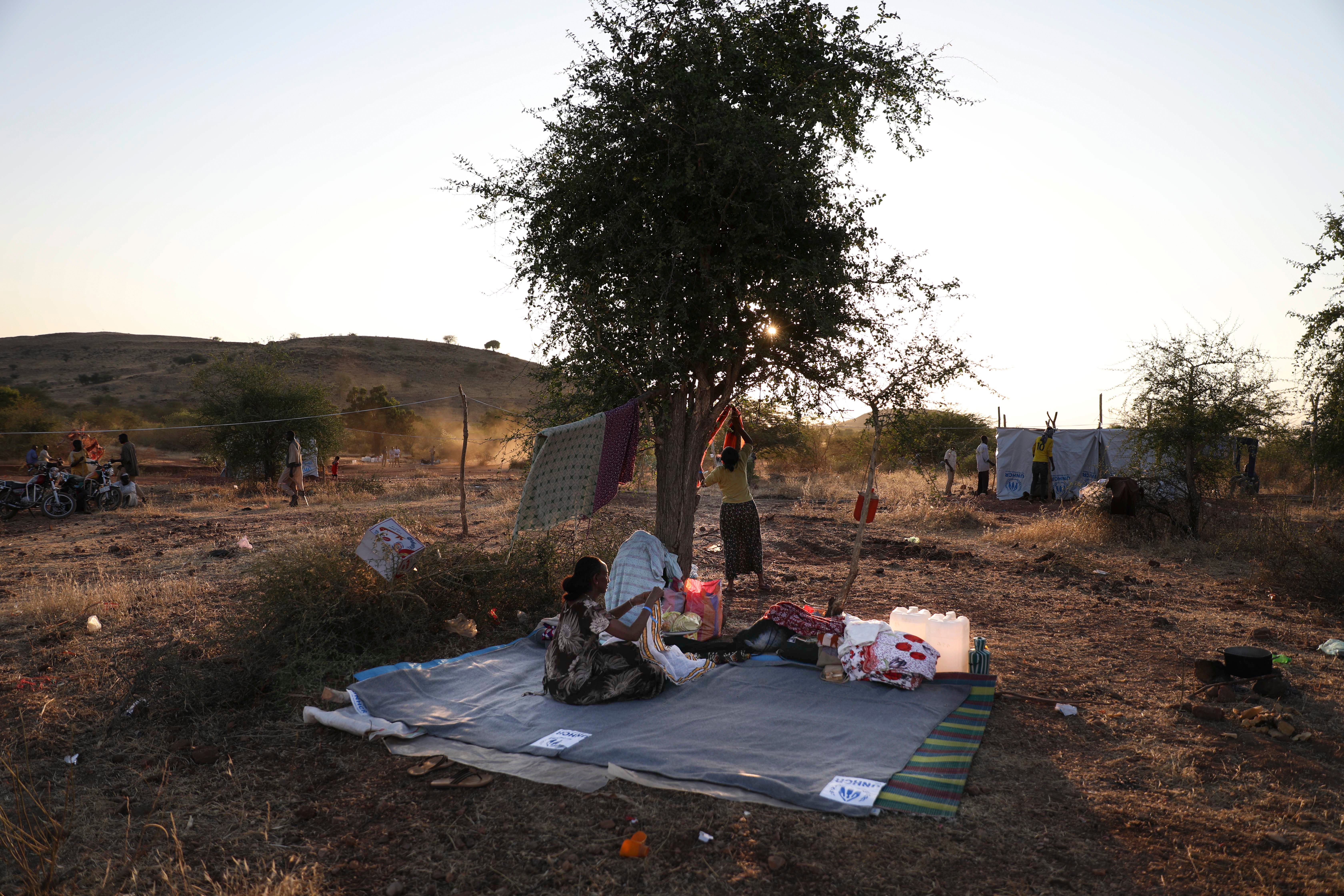Ethiopia’s multiple crises: War, COVID-19, even locusts
Ethiopia could hardly bear another emergency even before deadly conflict exploded in its northern Tigray region this month

Your support helps us to tell the story
From reproductive rights to climate change to Big Tech, The Independent is on the ground when the story is developing. Whether it's investigating the financials of Elon Musk's pro-Trump PAC or producing our latest documentary, 'The A Word', which shines a light on the American women fighting for reproductive rights, we know how important it is to parse out the facts from the messaging.
At such a critical moment in US history, we need reporters on the ground. Your donation allows us to keep sending journalists to speak to both sides of the story.
The Independent is trusted by Americans across the entire political spectrum. And unlike many other quality news outlets, we choose not to lock Americans out of our reporting and analysis with paywalls. We believe quality journalism should be available to everyone, paid for by those who can afford it.
Your support makes all the difference.Ethiopia could hardly bear another emergency, even before a deadly conflict exploded in its northern Tigray region this month. Now, tens of thousands of refugees are fleeing into Sudan, and food and fuel are running desperately low in the sealed-off Tigray region, along with medical supplies and even resources to combat a major locust outbreak.
The United Nations warns of a “full-scale humanitarian crisis.” Here’s why:
WAR
No one knows how many people have been killed, including civilians, since the fighting began Nov. 4. Hundreds have been wounded. Ethiopia’s federal government and the heavily armed Tigray regional government regard each other as illegal after a falling-out when Nobel Peace Prize-winning Prime Minister Abiy Ahmed sidelined the once-dominant Tigray leaders amid sweeping political reforms. Thousands of Ethiopian refugees are streaming into Sudan daily, and the U.N. says authorities are overwhelmed.
COVID-19
Ethiopia this month surpassed 100,000 confirmed coronavirus infections, while health officials warn that Africa’s second surge in cases has begun. The Tigray conflict threatens a swifter spread of COVID-19 in the region as people flee their homes. Meanwhile, the U.N. says trucks laden with medical and other supplies are stuck at heavily defended borders. Hospitals say even basic items such as blankets are needed. There is no electricity in the Tigray capital, Mekele, a city of about a half-million people, and water is running low.
LOCUSTS
The worst locust outbreak in decades has descended on Ethiopia and its neighbors, bearing billions of the voracious insects. They were destroying crops and threatening food insecurity well before the fighting. Researchers say some 80% of the Tigray region’s residents are subsistence farmers, and this time of year was already the lean season, with last year’s harvest eaten.
HUNGER
Food can’t get into the Tigray region of some 6 million people because of transport restrictions imposed after the fighting began. Humanitarian officials say long lines have appeared outside bread shops, prices have soared, and banks dispense only small amounts of cash. “At this stage there is simply very little left, even if you have money,” according to the internal assessment by one humanitarian group seen by The Associated Press. The U.N. has now set aside $20 million for “anticipatory action to fight hunger in Ethiopia."